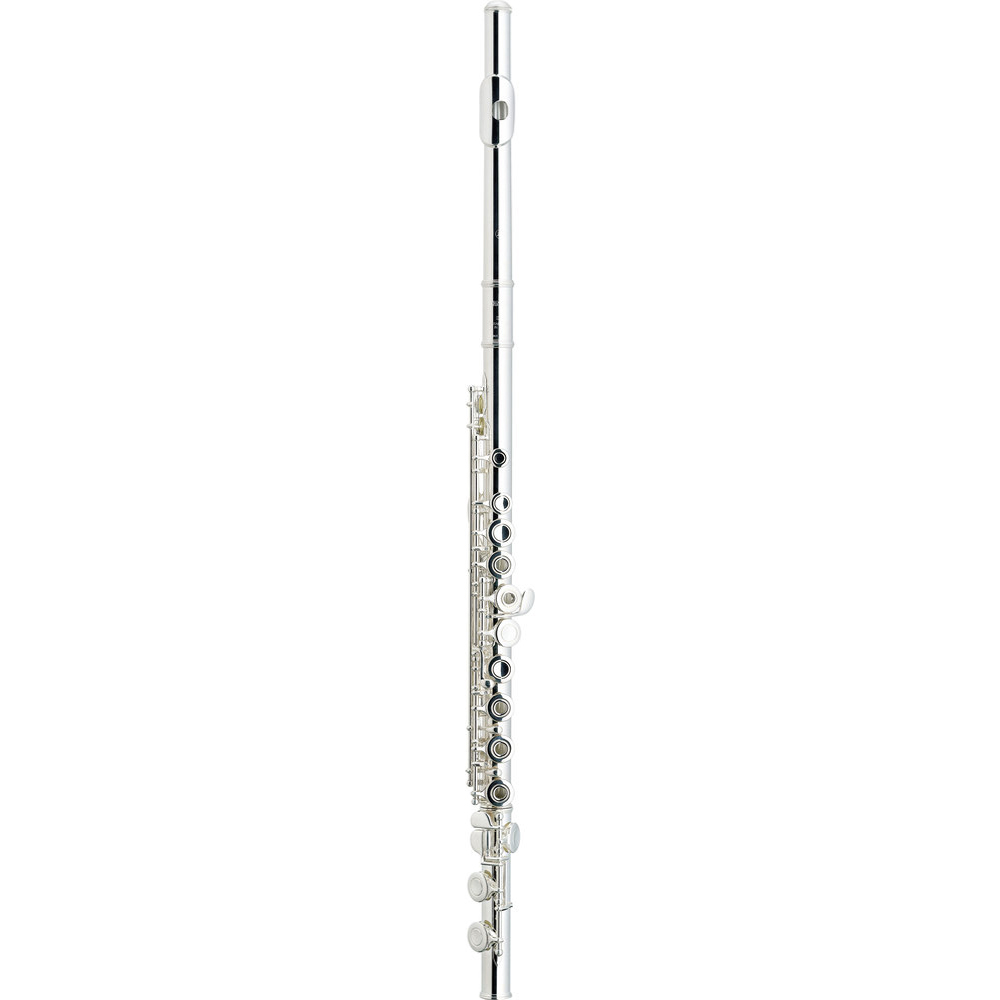
Flutes
in stock
in stock
in stock
in stock
in stock
in stock
in stock
in stock
in stock
in stock
in stock
in stock
in stock
in stock
in stock
in stock
in stock
delivery time: 7-14 days
delivery time: 8-24 weeks
delivery time: 8-24 weeks
delivery time: 8-24 weeks
The transverse flute: elegance and versatility in a woodwind instrument
Why is the transverse flute a woodwind instrument?
Structure of the transverse flute
Headjoint: Contains the embouchure hole and has a significant influence on the sound.
Center joint: With key mechanism for the finger technique.
Foot joint: Determines how low the flute can play (usually up to C or Bb). Transverse flutes are available in various materials, including nickel silver, silver, gold or platinum. Beginner flutes are often made of nickel silver as it is robust and inexpensive.
Who is the flute suitable for?
Children: Children can start with special children's flutes (often with a curved headjoint) from around 6-8 years of age.
Adult beginners: The flute is also easy to learn as an adult.
Advanced players: For musicians who want to play in orchestras, chamber music ensembles or solo concerts.
What should you look out for when buying?
Material
Nickel silver: Robust and ideal for beginners.Sterling silver: Provides a warmer sound and is preferred by advanced players.
Gold or platinum: For professionals who value the highest sound quality.
Keysystem
Closed keys: Easier for beginners.Ring keys: Require precise finger placement.
Accessories
A good case, a wiper stick and cleaning cloths are part of the basic equipment.Brand recommendations
Popular manufacturers are Yamaha, Pearl, Muramatsu and Azumi, which stand for quality and durability. The Schagerl brand also offers inexpensive flutes for flute lovers.Tips for learning the flute
The right breathing technique is essential. Breathe deeply into your belly and make sure the air flow is even.
Practice tone formation
Beginners should start by practicing long notes in order to develop a stable and clear sound.
Practice regularly
Short, daily practice sessions of 20-30 minutes are more effective than long, irregular sessions.
Take lessons
A qualified teacher will help you to learn technique and posture correctly from the outset. Alternatively, there are online courses and tutorials for self-taught learning.
Care and maintenance of the flute
Daily cleaning: Remove moisture with a wiper stick and soft cloth.
Regular maintenance: Have the flute checked once a year by a specialist.
Protect the mechanism: Avoid bending the keys or loosening the screws. Care and maintenance are carried out conscientiously in our in-house workshop.
Frequently asked questions about the flute
How difficult is the flute to learn?The flute is relatively easy to learn, especially with regular practice. There are special models for children and beginners that make it easier to play.
How expensive is a flute?
Beginner flutes cost between 300 and 1,000 euros. For advanced and professional players, flutes made of precious metals can cost several thousand euros.
What styles of music can you play?
The flute can be used in many genres, including classical, jazz, pop and even folk.
Are there alternatives to the flute?
For musicians who want to try out other sounds, there are alto flutes, piccolo flutes or the Irish flute (made of wood).
How do I hold the flute correctly?
Make sure your posture is relaxed and that you don't hold your arms too high or too low. The thumbs support the instrument while the fingers rest lightly on the keys.















